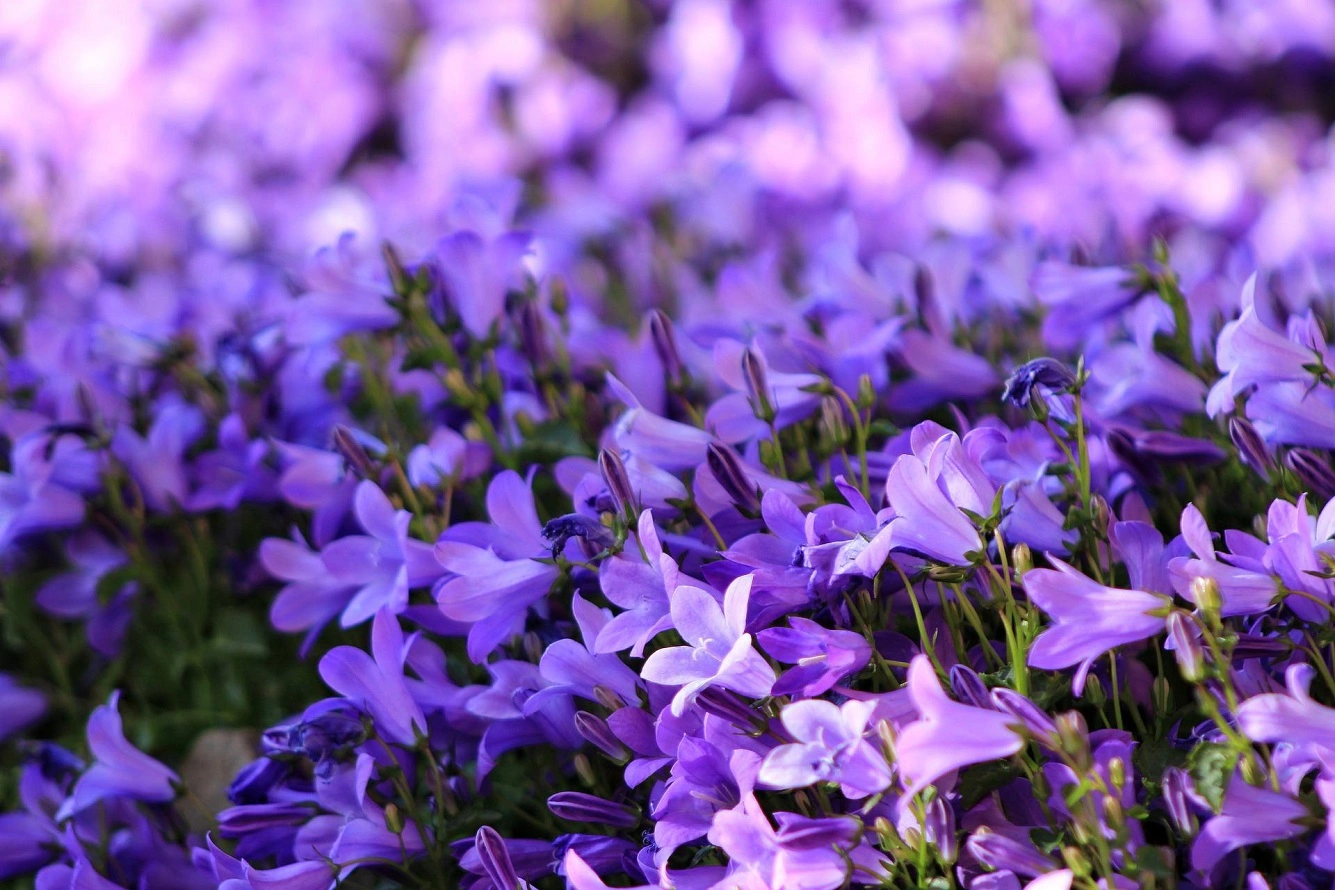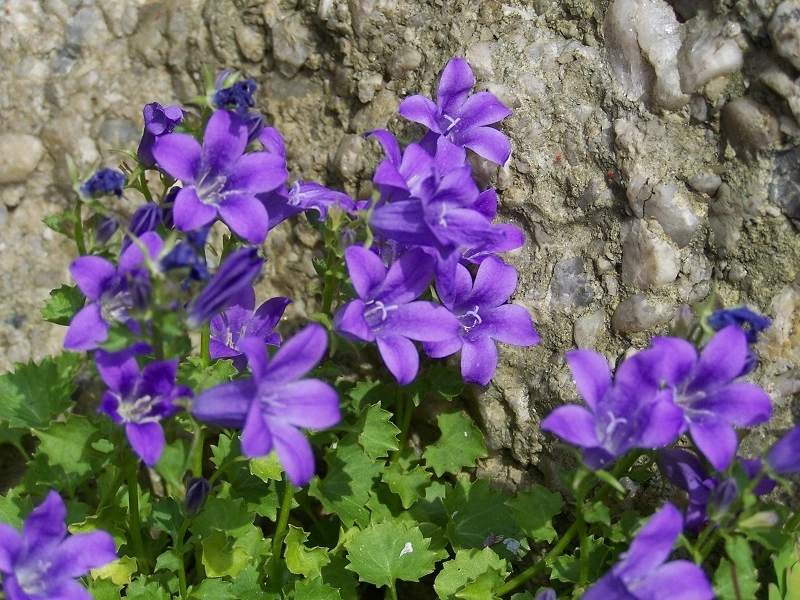Dalmatian Bellflower - Learn All About Campanula Portenschlagiana
Dalmatian bellflower is a perfect plant for basically any garden. But it looks best in rock gardens. The plant is also a perfect addition to concrete fences. It's a popular species thanks to its rich blooming and stunning appearance. It's often grown as a potted plant as well. In this form, Dalmatian bellflowers appear on balconies and patios. Learn the details of their care and cultivation.

Where does Dalmatian bellflower come from?
Dalmatian bellflower, also known as wall bellflower or more precisely – Campanula portenschlagiana, is a low-growing perennial plant. It originated in the mountainous regions of Croatia. Its name points to the region of Dalmatia. Thanks to its unique appearance and ease of cultivation, the plant is popular all over the world.
What does Dalmatian bellflower look like?
Dalmatian bellflower grows maximally 10-20 cm (3.9-7.9 in) tall and forms a thick bunch with many stems. Some branches are trailing, especially the most external ones. Campanula portenschlagiana develops two types of leaves.
- The basal leaves have serrated and wavy edges. They grow close to each other right above the ground, forming a characteristic rosette.
- The second type – leaves are growing on the plant’s stems and are much smaller and rounded.

Other popular bellflower varieties
Apart from Dalmatian bellflower, there are other varieties within the group of these plants. Here are the most popular ones grown by gardeners:
- Adriatic bellflower – with amazing purple-blue flowers shaped like little stars,
- Peach-leaved bellflower – the name refers to the leaves of shape resembling the ones of peach trees, it’s one of the tallest bellflowers that grow up to 90 cm (3 ft) tall, they have large flowers.
- Clustered bellflower ‘alba’ – when it blooms, it develops white flowers,
- Serbian bellflower – grows up to 70 cm (2.3 ft) tall, the variety grows quite rapidly and forms colorful carpets, its blooming period is quite long – from June to September.

Dalmatian bellflower – cultivation
If you decided to grow Dalmatian bellflowers, note that the plant originally grows in mountainous regions. In practice, it means that it prefers full-sun and warm spots. The soil should be moderately fertile, with medium moisture levels, and relatively loose. Make sure it has good drainage, or even use rocky soil of neutral or alkaline pH. Because of its original habitat, the plant is resistant to droughts.
Although Dalmatian bellflower comes from warm regions, it is completely frost-resistant. It means you don’t have to secure the plant before winter. Just make sure there is a good drainage layer in the soil, so the excess water flows out.
Dalmatian bellflower is a perfect rockery plant. It’s also commonly used around paths for yard landscaping, or planted by fencing walls. Consider planting the bellflower in containers. Such a beautiful, blooming houseplant is a perfect addition to a balcony, a patio, or a gazebo.
Does Dalmatian bellflower need regular watering and fertilizing
Dalmatian bellflower can endure periods of drought. But constant high temperatures and lack of precipitation might eventually threaten the plant’s condition. Make sure to water it in such a case.
Dalmatian bellflower doesn’t need regular fertilizing. Time after first trimming is the only exception. That’s when enriching the soil with a fertilizer is recommended, to support the plant’s growth. You can find appropriate products for blooming plants in every flower shop.

When to plant Dalmatian bellflowers?
Spring is the best time for planting Dalmatian bellflowers. Note that placing the plant in clusters of 2 or 3 plants is the best solution. This way, you can expect spectacular effects during the blooming season.
Plant no more than 11-15 bellflowers per 1 square meter (ca. 10.8 square feet). Keep the spacing of 30 centimeters (1 foot). Dalmatian bellflowers tend to spread, so it perfectly complements various floral arrangements created in gardens.
How to trim Dalmatian bellflowers?
Gardeners who decide to have this plant in their garden, should remember to trim it. The first time is crucial – after the plant finishes blooming. Nearly the entire plant should be cut, leaving only 10 cm (ca. 4 in) above the ground level. Thanks to this, the plant develops more branches. Cutting also encourages Dalmatian bellflowers to bloom again in September. Note the flowers won’t be as abundant as in spring.

Dalmatian bellflower – propagation
There are two methods of propagating Dalmatian bellflowers. You can divide the rhizomes in spring or autumn, when the plant has finished blooming.
- Using cuttings harvested from the plant’s side or top stems is a good option.
- Some varieties of this popular plant can be propagated using the harvested seeds.
Dalmatian bellflower – diseases and pests threatening the plant
Dalmatian bellflower is mainly vulnerable to aphids. Fortunately, they can be quickly eliminated. Just use an appropriate product, available practically in any garden store.
The plant is generally resistant to diseases. Only improper maintenance of the plant, e.g., not providing a proper drainage layer, can lead to development of fungi and root rot. Too much moisture might lead to grey mold. But it’s a result of picking a wrong location for the plant, or watering it too intensely. By sticking to the basic plant care rules, you can eliminate the risk of diseases and pests.

📍 Dalmatian bellflower – when is the best time to plant it?
Spring is the recommended time for planting Dalmatian bellflowers. You can plant the seeds directly in the ground, or in a container. The same applies to developed seedlings. Make sure to prepare the ground before.
📍 When do Dalmatian bellflowers bloom?
Dalmatian bellflowers usually bloom at the beginning of June, so in late spring and the beginning of summer. The flowers last until the end of August. After cutting the plant, it might bloom again in September, although there will be fewer flowers.
📍 How to trim Dalmatian bellflowers?
Trim Dalmatian bellflowers after first blooming has finished. Just cut the entire bunch, leaving several stems above the ground. Thanks to this, the plant can regenerate and bloom again in September.
📍 How to care for Dalmatian bellflower?
Dalmatian bellflower is relatively easy to care for. For this reason, it's a common species among beginner gardening enthusiasts. Remember to water the plant, especially during very dry months. But make sure not to overwater the plant. Also, the plant needs strengthening after cutting.
Featured articles




